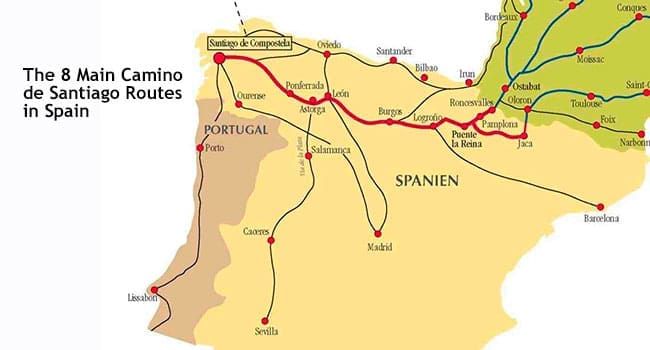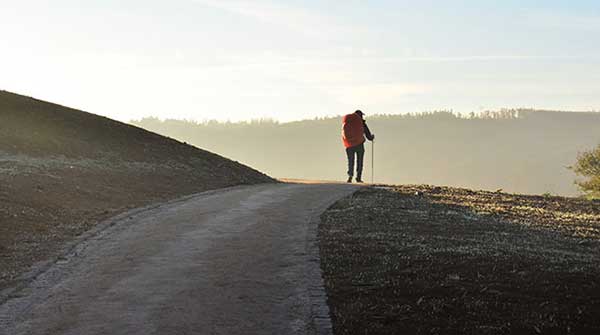The Camino de Santiago is a life-altering pilgrimage through northern Spain

For over a thousand years, the faithful have taken the pilgrimage to Santiago through northern Spain. It’s called the Way of St. James or El Camino de Santiago de Compostela. Sparked by the discovery of St. James’ remains, it has beckoned pilgrims from the far corners of the world, making it one of the world’s most iconic pilgrimage destinations.
The Camino de Santiago is more than a pilgrimage, however; it’s a life-altering odyssey that combines adventure, spirituality, and cultural immersion.
It’s actually not just one route. It is an extensive network of ancient pilgrimage routes stretching across Europe and coming together at the tomb of St. James (Santiago in Spanish) in Santiago de Compostela.
All of the different routes sprang up because, in the Middle Ages, pilgrims left home and started walking, making the pilgrimage to Santiago from wherever they lived.
Of all the routes defined today, the best known is the Camino Frances, the French Route. The entire route from St. Jean-Pied-du-Port near Biarritz in France to Santiago is nearly 780 km (500 miles). That’s quite a hike and quite a time commitment.
To make it shorter, you can start just over the border in Spain at the Roncesvalles Pass near Pamplona. If you do it this way, it is about 240 km (150 miles). It will take you about two weeks if you walk between 10 to 30 km (six and 20 miles) a day.
This route is well-marked with yellow arrows on walls and trees. Signposts for the pilgrimage route are adorned with a Scallop Shell, which was the symbol of St. James the Great.
You must walk at least the last 100 km (62 miles) to receive a Compostela Certificate showing you’ve made the pilgrimage. Most sites say the small city of Sarria in northwest Spain is the best starting point for this “short walk.”
The Camino de Santiago is becoming popular with secular tourists as well as the faithful. If you fall into the former category, you might want to pad in some time to see things along the way. Leave time to cap off a long day’s walk with tapas and wine at a cute little inn or open-air cafe.
Walking the Camino de Santiago is not difficult: most of the sections are fairly flat, and there are good paths. The main thing is you should be prepared for is all that walking. Take good boots or walking shoes. Take rain gear, too, because you could encounter rain at any time of the year.
You can camp or stay at inns, B&Bs or luxury Paradores. You can choose to do this with a group, or you can do it independently. If you are the backpacking type, you can be completely independent.
Tour operators will help set up your accommodations and transfer your baggage so you can walk carrying only a day pack. You can choose to travel with a guide or to travel on your own.
It’s a good idea to have reservations because the pilgrimage to Santiago is very popular. Even if you only want to hike it for the feeling of accomplishment and the scenery, making the pilgrimage to Santiago will leave you with a great sense of satisfaction.
| The Frugal Traveller
The opinions expressed by our columnists and contributors are theirs alone and do not inherently or expressly reflect the views of our publication.
© Troy Media
Troy Media is an editorial content provider to media outlets and its own hosted community news outlets across Canada.


